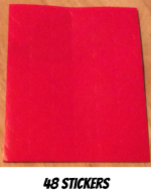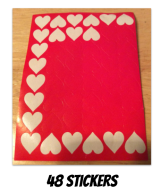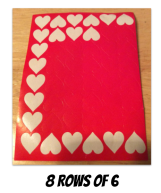I created a new session for a conference in St. Louis this summer after having great success in our classroom with stop motion animation as a means for exploring word problems. I was so excited about the engagement and conversations I was hearing that I really wanted to share the experiences, so I got to work. Pretty soon it occurred to me that my presentation and the excitement that I had wasn’t about Stop Motion or any other tech tool. It was about the powerful mathematics that was happening in our classroom because we were telling stories to make sense of mathematical ideas. This is what I tried to capture in the session. I was a little concerned that attendees may be upset that we didn’t actually address Stop Motion until the end of the session, but hoped for the best.
What I wasn’t prepared for was the absolutely fantastic conversations I was hearing with teachers as they began to tell stories; The way the room started buzzing and the smiles I saw on their faces when they used materials to “be silly” with each other.
While I was walking the room and listening to conversations, I heard one teacher say to another, “That’s not a story. You just put some animals down and said what they were!” I quickly grabbed the opportunity to call this conversation out because it is exactly what happens with students. Our first graders are obsessed with rules and procedures. They want to make sure that everyone is being treated fairly and “following the rules.” If one of the students had done that with their objects, the other would most definitely call them out on it. We discussed how this opened up an opportunity for not only powerful conversations about math, but that we just learned that some students weren’t clear on what constitutes a story. This student (and others) might need to revisit the elements of a good story.
I also saw many teachers using their animals to hunt each other or kill the other animals. It’s always interesting to me to see the variation in beliefs about this type of behavior with teachers. Some teachers feel very strongly about keeping it “kid appropriate” and others just go all in. Kids are not going to allow their imagination to be stifled. I intentionally include knights and dragons and predators and prey in the materials I put out for students. In my opinion, we have got to allow students to be creative and not stifle their creativity. Yes, there are definitely instances when we might have to step in, but one of the great things about these activities is that students are able to see how math connects to their world. I want to leave that as open-ended as possible for them. The minute I tell a student that they can’t tell a story “that way,” I feel like I have put them in a box and told them their imagination is not valid or worse yet, “not good enough” or “teacher-approved.”
Teachers ultimately have to decide what is and is not appropriate in their classroom. However, I would challenge everyone to step back and take an unbiased look at the rules and procedures in your classroom. Are you staying consistent in beliefs and practice?
For the session I decided to focus on eight different ways to use storytelling to develop context for word problems. In my opinion, this allows students opportunities to build experiences with the language that are used in situations in daily life, but also in math word problems.
Story Telling
Allow students time to explore and tell stories.
During this section of the session, teachers were given many different types of materials and allowed to tell stories. There need be no math involved, they were just supposed to “play with the objects” and make up stories. This is much like when we introduce a new manipulative and allow students to explore it before we ask them to use in the context of learning or when we use a team building lesson to introduce a new Kagan structure.
PBL Connections
Connect to a PBL Unit or use scenarios familiar to students.
We discussed several ways to connect story telling and word problems to PBL concepts such as following up a video or lesson with a connected math problem or using an image to discuss possible stories that could be told using math language.
Flip the Task
Provide students the answer and have them come up with the question.
This is one of my favorite things to do and so easy to differentiate. The answer is 12, what is the question? This could be used in Pre-K all the way through high school and have such a range of mathematical concepts.
Focus on Strategies
Assign a strategy that students must use in their story.
For younger students in particular, this is a great way to firm up their understanding about which strategies to use and why. For example, teachers were asked to tell a story that illustrated the making ten strategy.
Some teachers used animals to demonstrate multiple addends and grouping them to make a ten first, some used animals that added to ten (just two addends), and some used tenths using pattern blocks to explore fractions. There were so many representations of this strategy and so many powerful stories!
Provide a Visual
Let students decide how to make a story from a visual.
What’s the saying? A picture is worth a thousand words? If that is indeed true, then I bet we can pull out at least a thousand words from a picture. We played with using a picture as a springboard for storytelling and allowing students to take their own pictures (easy to connect to PBL unit).
Provide the Equation
Students decide how to model an equation.
Starting with the abstract representation of a story is a great way to get students involved in backwards design. What context would apply to this? The possibilities are almost limitless.
Use Resources
Change independent practice worksheets into storytelling opportunities.
The fact is at the end of the day, all student will be exposed to problems at some point either in their resources texts or on standardized tests that are written as a word problem that may or may not be written in a context familiar to them. However the idea is that we can use story problems from those texts to have students explore a problem or two more deeply through storytelling and modeling instead of assigning several problems that aren’t invested in.
Let them Eat Cake! (or candy)
Refreshing the items in your Stop Motion station can add a fresh perspective to story telling. Sometimes it only takes a trip to the dollar store to re-create the excitement around story telling in math class!
Here is the presentation:
















 decided to try it out in our small groups and simply ask students the following questions:
decided to try it out in our small groups and simply ask students the following questions:




